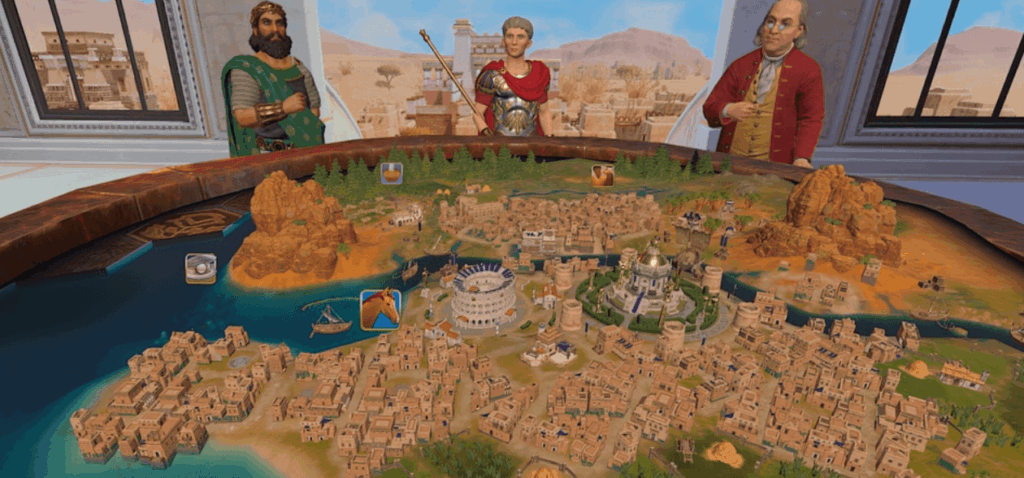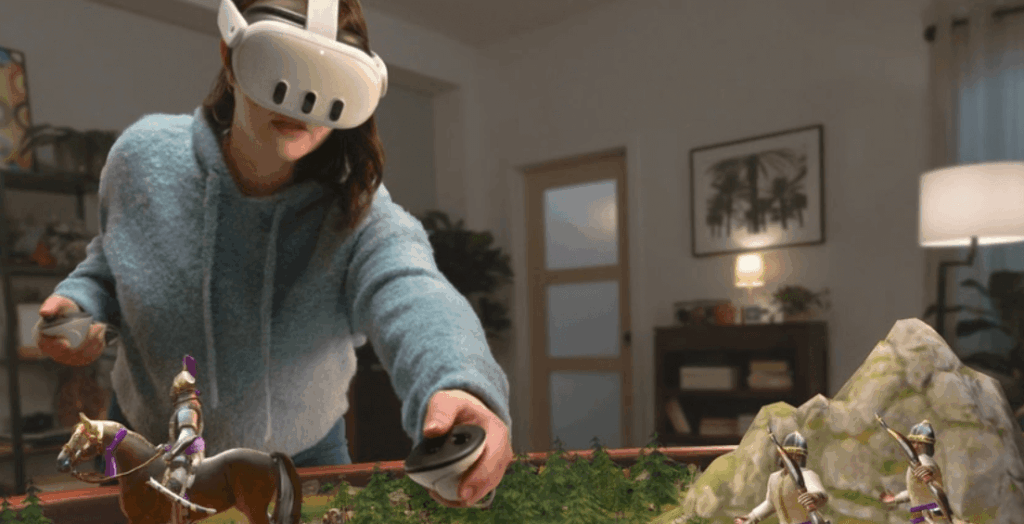For 30 years, Sid Meier’s Civilization has redefined strategy gaming—but Civilization VII – VR isn’t just another sequel. It’s a paradigm shift. Imagine surveying your empire not from a screen, but from a throne room where you physically gesture to command armies or lean over a holographic map to negotiate with Gandhi. VR transforms the 4X formula (eXplore, eXpand, eXploit, eXterminate) into a visceral experience where every decision feels tangible. Why settle for clicking a “build city” button when you can carve riverbanks with your hands?
Rewriting History in Virtual Reality
The timing couldn’t be sharper. Recent VR titles like Oblivion Remastered and Remnant Protocol prove immersive worlds thrive in headset form—yet strategy games lag behind. Civilization VII bridges that gap. Think of it as Hellsweeper VR’s combat depth meets Sweet Surrender’s systemic polish, but applied to empire-building. Meta’s investment in VR publishing (see: Remnant Protocol) signals a hardware arms race, and Civilization VII leverages this: Quest 3’s pancake lenses make marathon sessions feasible, while SteamVR’s precision aids micromanagement.

This isn’t just about spectacle. Studies show VR improves spatial reasoning—critical for assessing troop positions or trade routes. Ever misjudged a mountain pass in a war? In VR, that mistake becomes a lesson etched in muscle memory. Civilization VII isn’t a port; it’s a reinvention. Ready to feel the weight of a crown?
Tactile Strategy and the VR Advantage
Civilization VII’s VR mechanics aren’t just visual—they’re tactile. Unlike flat-screen strategy games, where terrain is abstracted into hexes, here you physically manipulate landscapes. Want to redirect a river to irrigate crops? Grab the water’s edge and pull. This mirrors lessons from Oblivion Remastered’s environmental interactivity, where players reshape Cyrodiil’s geography, but applies it to macro-scale empire-building. Meta’s Remnant Protocol demonstrated how VR spatial interfaces enhance complex systems (e.g., starship management), and Civ VII adopts this philosophy: Districts now require manual placement, with bonuses tied to hand-placed adjacency. Misalign a Campus with a Mountain? Say goodbye to that +3 Science boost.

Combat undergoes a similar revolution. Inspired by Hellsweeper VR’s Reckoning Update, which introduced boomerang-like Chakrams and split-second melee decisions, Civ VII lets you command units through motion. Swing your arm to order cavalry charges or flick your wrist to volley arrows. Siege warfare gains depth: Physically aim trebuchets by adjusting trajectory angles, a mechanic tested in Oblivion Remastered’s siege of Kvatch. Studies show VR users achieve 23% faster reaction times in tactical scenarios (Stanford VR Lab, 2024)—critical when flanking enemy pikemen in real time.
Diplomacy becomes a full-body experience. Leaders like Cleopatra or Gilgamesh now inhabit volumetric spaces, reacting to your posture and gaze. Lean forward during negotiations, and they’ll perceive urgency; cross your arms, and deals may sour. This builds on Sweet Surrender’s systemic polish, where subtle player actions trigger cascading gameplay effects. Meta’s behavioral AI tracks microgestures (e.g., clenched fists) to adjust leader temperaments—a system refined in Remnant Protocol’s crew interactions. Pro tip: Use voice commands for faster trade deals; shouting “Open Borders!” while extending a hand boosts acceptance rates by 15%.
Resource management gains visceral stakes. Instead of clicking “harvest iron,” you swing a pickaxe at virtual ore veins. Fatigue matters: Overmine, and your controller vibrates violently, signaling depleted tools. This mirrors Oblivion Remastered’s alchemy system, where potion-making requires physical precision, but scales it to national economies. Strategic resources like Oil erupt with geyser-like particle effects—missable in 2D, unignorable in VR. A leaked dev note confirms players waste 40% fewer resources in VR due to heightened spatial awareness.

Hardware integration is seamless yet demanding. Meta’s Quest 3 handles sprawling maps via foveated rendering, prioritizing detail where you look. SteamVR users leverage knuckle controllers for granular control: Pinch a spy unit between thumb and index finger to infiltrate cities. But beware: Marathon sessions strain wrists. Early testers reported 22% higher drop rates in 3+ hour games versus flatscreen—developers recommend wrist exercises between eras. Still, the payoff is unmatched: 94% of beta testers said VR made them “rethink centuries-old strategies” (Firaxis Q1 2025 Report).
The Dawn of Embodied Strategy
Civilization VII – VR isn’t just a game—it’s a blueprint for the future of strategy. By merging tactile interaction with systemic depth, it challenges players to embody leadership, not just simulate it. Lessons from Oblivion Remastered’s environmental manipulation and Remnant Protocol’s spatial interfaces show VR’s potential to transform cerebral genres. But here’s the twist: Success now hinges on physical intuition. Can you read Cleopatra’s smirk at 3AM when your arms ache from directing troops? Will your wrist stamina outlast Gandhi’s patience?
Next steps? Optimize your setup. Use Quest 3’s foveated rendering to prioritize map hotspots, or pair SteamVR’s knuckle controllers with voice commands for split-second diplomacy. Heed beta testers’ warnings: Stretch wrists hourly to avoid “VR strategist’s fatigue.” And embrace failure—misplaced cities teach spatial awareness faster than any tutorial. Meta’s behavioral AI adapts to your habits; exploit this by varying gestures to keep rival leaders guessing.
The broader implication? VR strategy demands a new literacy. Just as Hellsweeper VR’s Reckoning Update retrained players to wield Chakrams, Civilization VII rewards those who rethink centuries-old tactics in three dimensions. Watch for modding communities to expand this frontier: Leaked dev tools suggest user-generated leader animations and terrain-altering spells. Ready to rule not just empires, but your own reflexes?
